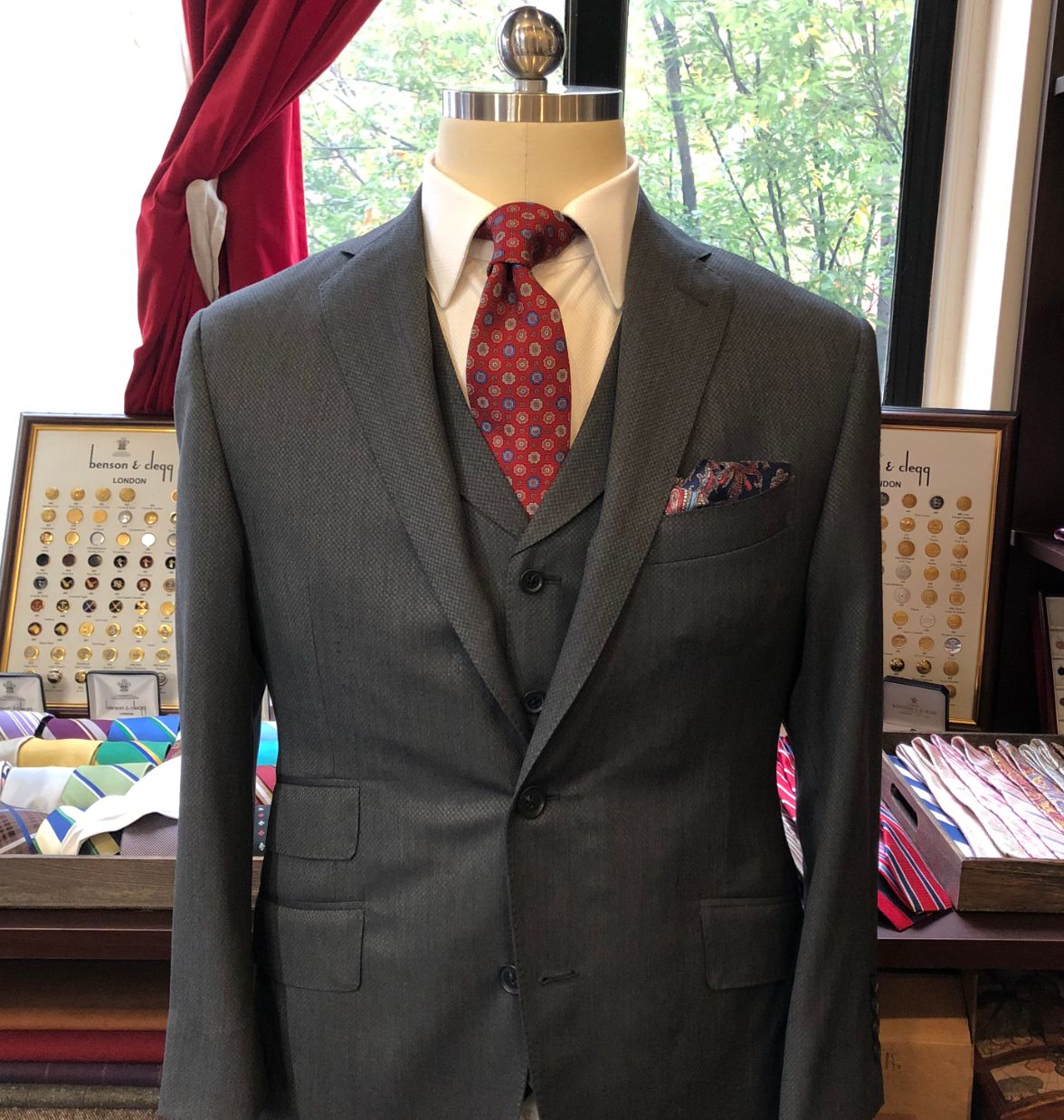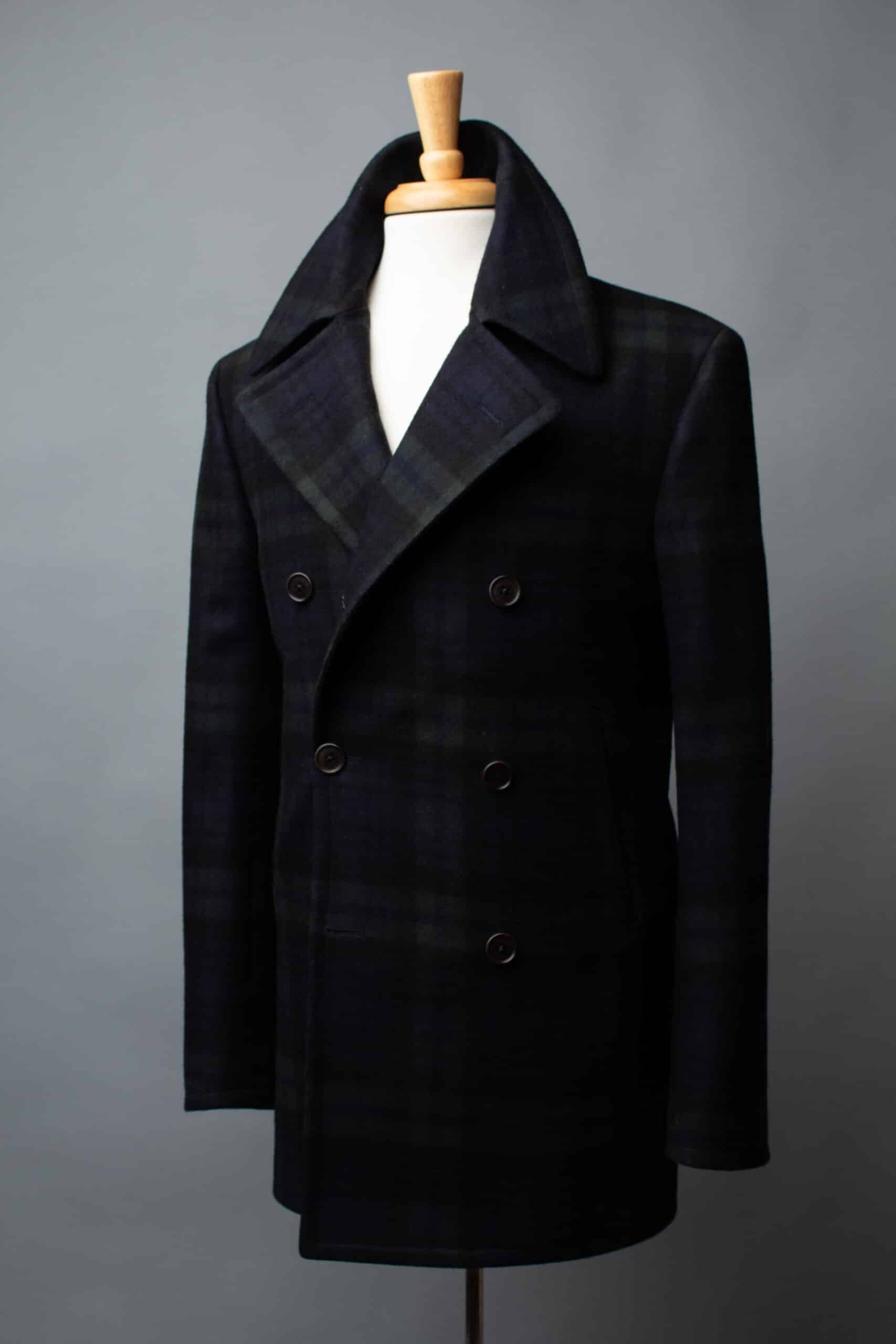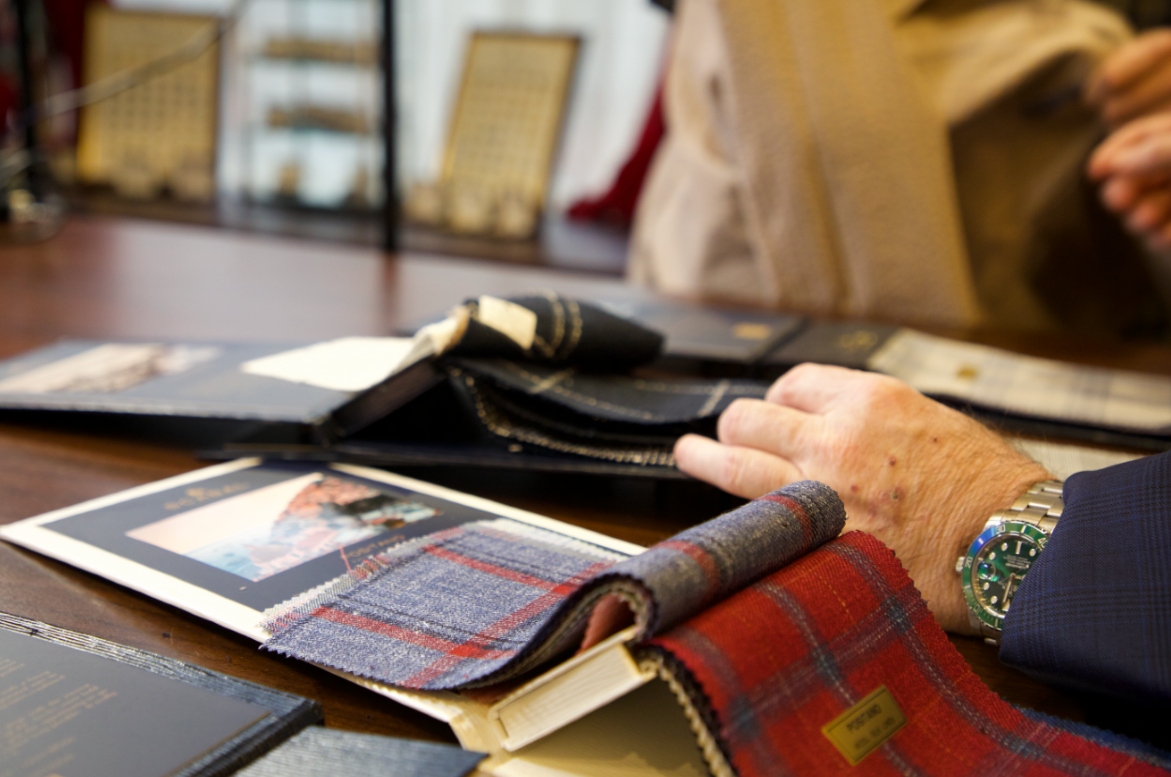If there’s been a long-standing point of confusion in the world of men’s style, it’s whether or not there’s a difference between suits and tuxedos.
Short answer: Yes, there’s a difference.
In this article, we will expand on this response in detail. We at Henry A. Davidsen, Philadelphia’s premier image consultants and master tailors of wedding tuxedos, will dispel a few misconceptions and clearly distinguish when and where it is appropriate – or necessary – to wear a tuxedo rather than a suit.
What Is A Suit?
 A suit is an ensemble consisting of a jacket and trousers (and sometimes a vest) made from the same material. The closest etymological relative to the word “suit” is Old French’s “suite,” which means “to follow.” While this means that faux-velvet tracksuits and the disquieting denim suits of the early-2000s are technically suits, you should not wear either to an event that requires a suit.
A suit is an ensemble consisting of a jacket and trousers (and sometimes a vest) made from the same material. The closest etymological relative to the word “suit” is Old French’s “suite,” which means “to follow.” While this means that faux-velvet tracksuits and the disquieting denim suits of the early-2000s are technically suits, you should not wear either to an event that requires a suit.
Just as every square is a rectangle but not every rectangle is a square, every tuxedo is technically a suit, but not every suit is a tuxedo.
Suits vs. Tuxedos
Suits
 A suit is simply a jacket and trousers made of the same material and color. The material is typically worsted wool, but can also be linen, cotton, or a silk blend. While most business suits are dark navy or grey, a suit can be made from any color. It’s unlikely that you can wear, say, a pink cotton suit to the office, but if you’re at an outdoor summer party, you’ll be fine. Suits may also be solid colors or include patterns, such as stripes or windowpanes.
A suit is simply a jacket and trousers made of the same material and color. The material is typically worsted wool, but can also be linen, cotton, or a silk blend. While most business suits are dark navy or grey, a suit can be made from any color. It’s unlikely that you can wear, say, a pink cotton suit to the office, but if you’re at an outdoor summer party, you’ll be fine. Suits may also be solid colors or include patterns, such as stripes or windowpanes.
More often than not, suits are worn for business purposes during daytime hours. More casual suits (think lighter in color and/or made of a material less dressy than worsted wool) might not be appropriate for some offices, but they’re still meant to be daytime outfits.
Tuxedos
 Tuxedos (also known as “dinner clothes” or “dinner jacket and trousers”) are like suits in that they consist of a jacket and trousers of matching color and material, and they should fit the same as a suit. That’s pretty much where the similarities end.
Tuxedos (also known as “dinner clothes” or “dinner jacket and trousers”) are like suits in that they consist of a jacket and trousers of matching color and material, and they should fit the same as a suit. That’s pretty much where the similarities end.
Color-wise, traditional tuxedos are either solid black or midnight blue. The most traditional tuxes are made from worsted barathea, a hopsack twill weave that has a slightly pebbled texture. Many nowadays are made of the same worsted wool as suits.
The key markers of a tuxedo are the satin or grosgrain facings covering the lapels, breast and lower besom pockets, and pant outseams. It’s worth noting that tuxedos should only have peak lapels or shawl collars, and one-button stances (if single-breasted).
Tuxedos are technically evening semi-formal wear. While many men break this rule, tuxes shouldn’t be worn before 5:00 p.m. or thereabouts.
Can A Black Suit be Worn as A Tuxedo?
We don’t mean to be blunt, but no, a black suit is not a substitute for a tuxedo. If your event calls for “black tie,” “cravate noire” or something similar, you must wear a tuxedo. You can only wear a black suit to such an event if the dress code is “black tie optional.” While a well-tailored black suit is certainly sophisticated attire, the historical informality of a suit makes it an inappropriate alternative to a tuxedo.
Conclusion
As the master tailors of bespoke suits and wedding tuxedos in the Philadelphia area, we at Henry A. Davidsen can help you achieve the right look for any occasion. Contact us today to set up an appointment.



